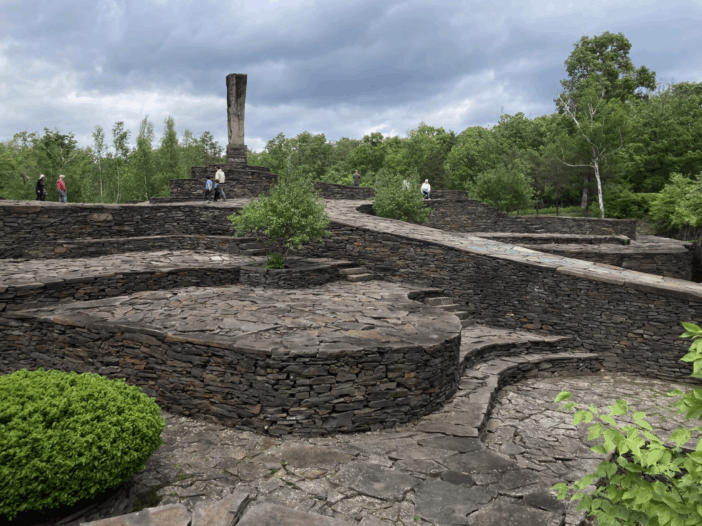
I visited Opus 40 on May 12, 2025. It’s not a well-known artwork in Europe—I found it by chance on Google Maps. It seemed to be in the middle of nowhere, but the area is filled with striking blue stones
Artist Harvey Fite (1903–1976) lived and worked on the site for 37 years. It was one of the excellent works of art I have ever seen.
John Cederquist, a longtime supporter and board member of Opus 40, gave us a nearly three-hour tour of the site. It was fascinating to learn that a community of neighbors, Harvey’s students and colleagues, and some musicians from Woodstock helped contribute to Harvey’s project. After his tragic death—an accident that occurred within his own artwork—his supporters have continued to work to preserve it. As an artist, Harvey wanted to reveal the process behind creation. For instance, he left behind part of the chain he used to place the large central stone. Many stories surround his work. Preservation takes money, of course, and John joked, “Maybe I’ll phone Bill Gates for support.”
I began to reflect on my work as an artist. My installations are temporary, and most of the materials I use eventually end up in the trash. Then a thought struck me: we all die someday—so what does it really mean for an artist to leave behind their work?
After Harvey’s passing, the Opus staff asked several professionals to restore his artworks. But no matter how skilled they are, it can never truly be what Harvey created. I saw that clearly.
At the same time, people still come to experience his work. Supporters organize concerts, yoga sessions, and various performances around the site. Yet without restoration, the artwork will slowly deteriorate—it will become unsafe and fade into ruins.